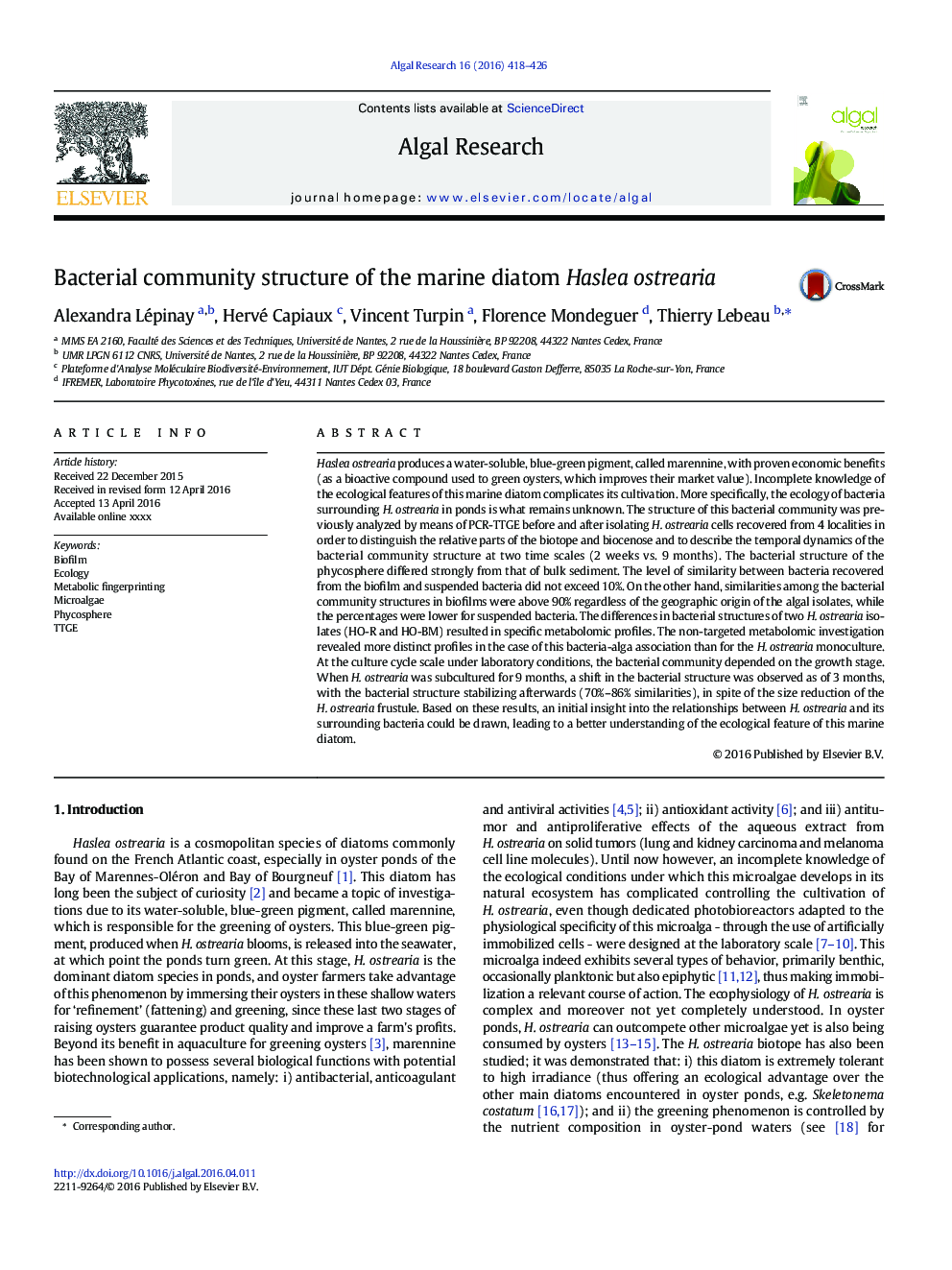| کد مقاله | کد نشریه | سال انتشار | مقاله انگلیسی | نسخه تمام متن |
|---|---|---|---|---|
| 8087105 | 1521816 | 2016 | 9 صفحه PDF | دانلود رایگان |
عنوان انگلیسی مقاله ISI
Bacterial community structure of the marine diatom Haslea ostrearia
دانلود مقاله + سفارش ترجمه
دانلود مقاله ISI انگلیسی
رایگان برای ایرانیان
کلمات کلیدی
موضوعات مرتبط
مهندسی و علوم پایه
مهندسی انرژی
انرژی های تجدید پذیر، توسعه پایدار و محیط زیست
پیش نمایش صفحه اول مقاله

چکیده انگلیسی
Haslea ostrearia produces a water-soluble, blue-green pigment, called marennine, with proven economic benefits (as a bioactive compound used to green oysters, which improves their market value). Incomplete knowledge of the ecological features of this marine diatom complicates its cultivation. More specifically, the ecology of bacteria surrounding H. ostrearia in ponds is what remains unknown. The structure of this bacterial community was previously analyzed by means of PCR-TTGE before and after isolating H. ostrearia cells recovered from 4 localities in order to distinguish the relative parts of the biotope and biocenose and to describe the temporal dynamics of the bacterial community structure at two time scales (2Â weeks vs. 9Â months). The bacterial structure of the phycosphere differed strongly from that of bulk sediment. The level of similarity between bacteria recovered from the biofilm and suspended bacteria did not exceed 10%. On the other hand, similarities among the bacterial community structures in biofilms were above 90% regardless of the geographic origin of the algal isolates, while the percentages were lower for suspended bacteria. The differences in bacterial structures of two H. ostrearia isolates (HO-R and HO-BM) resulted in specific metabolomic profiles. The non-targeted metabolomic investigation revealed more distinct profiles in the case of this bacteria-alga association than for the H. ostrearia monoculture. At the culture cycle scale under laboratory conditions, the bacterial community depended on the growth stage. When H. ostrearia was subcultured for 9Â months, a shift in the bacterial structure was observed as of 3Â months, with the bacterial structure stabilizing afterwards (70%-86% similarities), in spite of the size reduction of the H. ostrearia frustule. Based on these results, an initial insight into the relationships between H. ostrearia and its surrounding bacteria could be drawn, leading to a better understanding of the ecological feature of this marine diatom.
ناشر
Database: Elsevier - ScienceDirect (ساینس دایرکت)
Journal: Algal Research - Volume 16, June 2016, Pages 418-426
Journal: Algal Research - Volume 16, June 2016, Pages 418-426
نویسندگان
Alexandra Lépinay, Hervé Capiaux, Vincent Turpin, Florence Mondeguer, Thierry Lebeau,